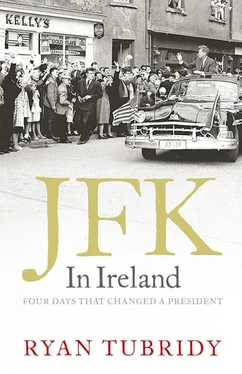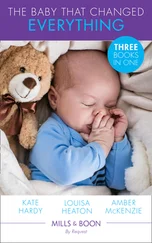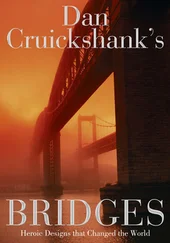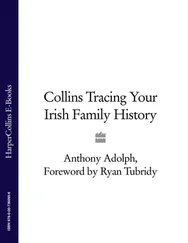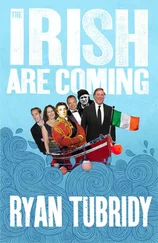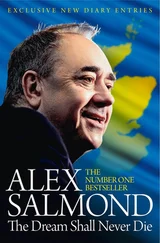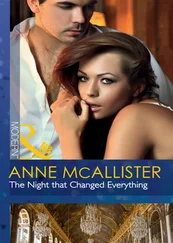In Ireland
FOUR DAYS THAT CHANGED A PRESIDENT
RYAN TUBRIDY

For Ella and Julia My little dotes
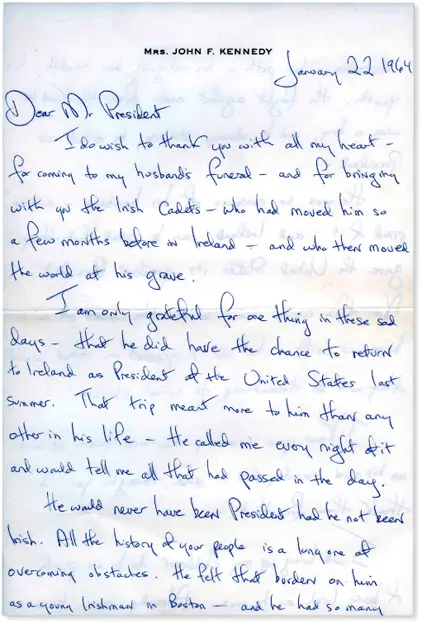
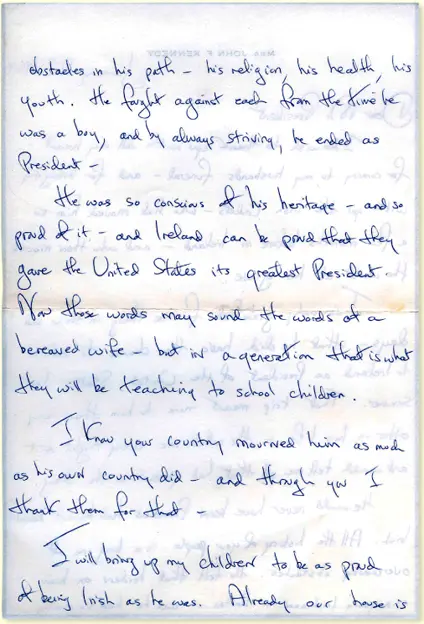
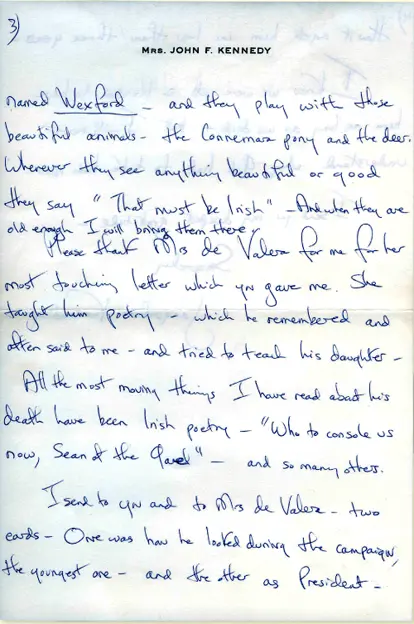
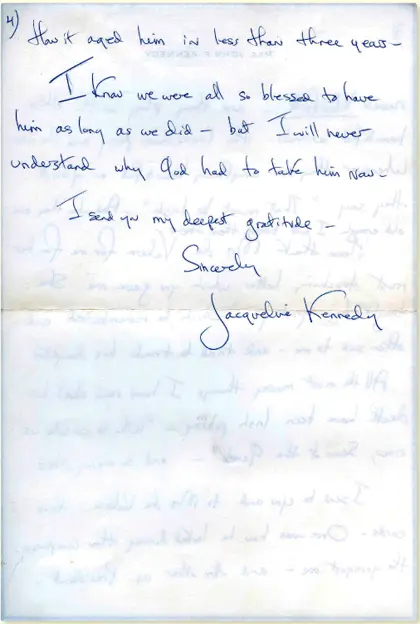
A letter from Jacqueline Kennedy to President de Valera, thanking him for attending her husband’s funeral.
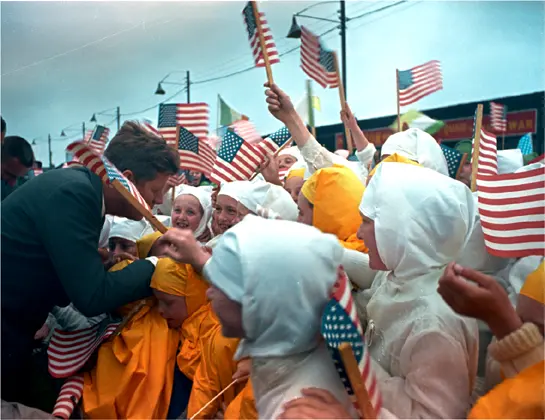
The Irish tricolour comes alive for JFK as children from local schools dressed in orange, white and green rainwear rush to greet him in Galway.
Cover
Title Page JFK In Ireland FOUR DAYS THAT CHANGED A PRESIDENT RYAN TUBRIDY
PROLOGUE
CHAPTER ONE The Kennedys: From Poverty to Power
CHAPTER TWO The Kennedys Come Home, 1930s–1950s
CHAPTER THREE Wooing the President
CHAPTER FOUR Planning the Visit
CHAPTER FIVE The European Tour Begins
CHAPTER SIX Arriving in Dublin
CHAPTER SEVEN New Ross
CHAPTER EIGHT Dunganstown
CHAPTER NINE Wexford Harbour
CHAPTER TEN The Garden Party
CHAPTER ELEVEN Iveagh House
CHAPTER TWELVE Cork
CHAPTER THIRTEEN Arbour Hill
CHAPTER FOURTEEN Leinster House
CHAPTER FIFTEEN Dublin Castle
CHAPTER SIXTEEN The Last Supper
CHAPTER SEVENTEEN Galway
CHAPTER EIGHTEEN Limerick
CHAPTER NINETEEN Shannon Airport
CHAPTER TWENTY The Road to Dallas
CHAPTER TWENTY–ONE JFK in Ireland: The Legacy
NOTES
INDEX
ACKNOWLEDGEMENTS
PICTURE CREDITS
Copyright
About the Publisher
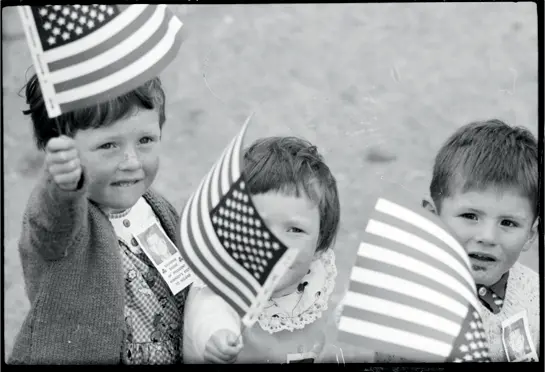
Badge of honour: three small children cheer JFK during his Irish visit.
Kenny O’Donnell, the President’s right–hand man was flabbergasted. “Ireland?” he said. “Mr. President, may I say something? There’s no reason for you to go to Ireland. It would be a waste of time. You’ve got all the Irish votes in this country that you’ll ever get. If you go to Ireland, people will say it’s just a pleasure trip.”
Nobody thought it was a good idea. Not the American media, not the presidential advisers, nobody. But President Kennedy had made up his mind and when O’Donnell went back to the President the following day to relay this message, Kennedy looked up at him from his newspaper “with an air of exasperated impatience”. “Kenny, let me remind you of something,” he said with a distinct air of finality and authority. “I am the President of the United States, not you. When I say I want to go to Ireland, it means that I’m going to Ireland. Make the arrangements.” 1
It was meant to be a band–aid trip to key European allies, an attempt to show them that America cared as the Soviet beast breathed down their necks. Italy demanded a visit, Germany needed attention, England desired a distraction and France sulked. But there were bigger problems at play; Italy was between governments and there was an ailing Pope in the Vatican. In Germany, Chancellor Adenauer’s government was in disarray after the Der Spiegel affair. In England, Harold Macmillan was suffering through the extraordinary Profumo Affair, which saw his War Minister caught lying about his affair with a call–girl who happened to be sharing a bed with Russian naval attaché Eugene Ivanov. The thought of America’s glamorous young president popping over for tea was political manna for the electorally beleagured leaders of Europe.
June 1963 was as busy a month as any for President Kennedy. He had some significant dates in his diary and he had some housekeeping to attend to. In the latter category fell his appointment with Governor John Connolly of Texas. The two men needed to discuss the President’s visit to Dallas some five months later. In the former category, Kennedy delivered his “Peace Speech’ in which he addressed nuclear weapons and atmospheric test bans and urged the world to “cherish our children’s future”. But there were domestic problems too as the Kennedy administration confronted one of the great seismic struggles of twentieth century American politics, that of civil rights.
At home, the media natives were getting restless; the Washington Post made the wry observation that “Ireland is the only country the President will visit that has what can be described as a firmly–established and durable Government” while in a reference to the race riots in the South, Senator Hugh Scott said “I’d rather see him go to Birmingham (Alabama) than Berlin just now”. 2The spring of 1963 saw Birmingham inflamed with racial tension as the civil rights movement, spearheaded by Dr Martin Luther King Jr, sought to overthrow the bastions of racial segregation.
“It would be difficult to dream up a more unjustified and time-wasting trip than the one on which President Kennedy is scheduled to embark”, trumpeted an indignant New York Herald, before adding, “In Rome Mr. Kennedy will find neither a Pope nor an established Government; in London he will find a Prime Minister with other things on his mind. In Germany, too, he will find something in the nature of a ‘lame duck’ Government.” This grave assessment of the international situation was capped by a side–swipe at the other “explanation of the trip – the sentimental call of Dublin and the Kennedy ancestral town of New Ross; but surely his Irish friends would understand that urgent Congressional and racial problems required his continued presence in Washington at the moment.” 3
And yet, the man who was always interested in history and global politics, the man who started life as a journalist and had visited Europe on the cusp and in the aftermath of World War II, wanted to go to. He not only wanted to go, he felt entitled to a little something for himself. John Fitzgerald Kennedy wanted to visit the land of his forebears. He wanted to go home.
CHAPTER ONE The Kennedys: From Poverty to Power

Ireland in the 1840s was a country on its knees. It was a time that robbed a nation of a generation. The exodus that took place saw the kernel of the Kennedy clan take hold on the shores of Boston. Here was a family forced together by the horrors of history. John F. Kennedy’s great–grandparents fled the greatest disaster that this island ever witnessed – The Great Famine. Caused by the blight of the potato crop in 1845, this killed a million Irish men, women and children in the course of five years, an eighth of the island’s total population, while another million fled the plights of starvation and disease.
Читать дальше
